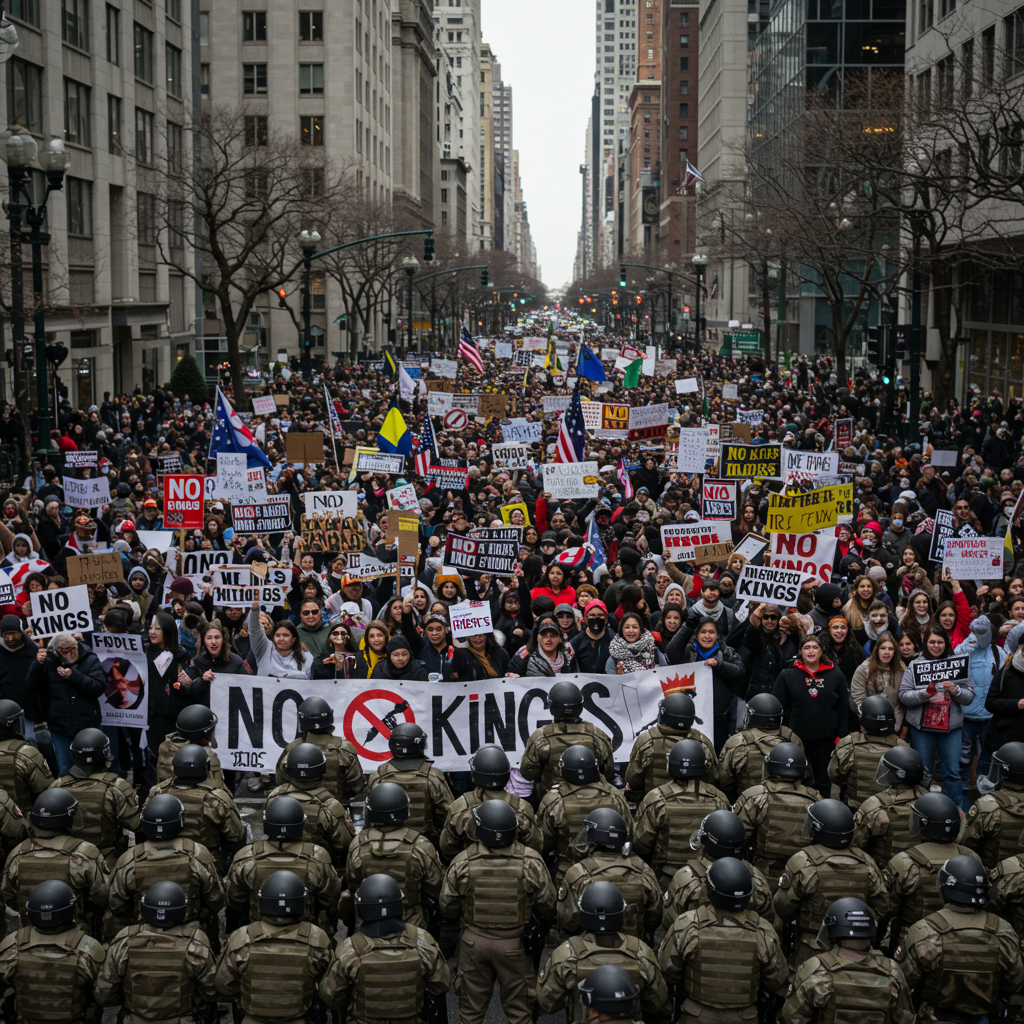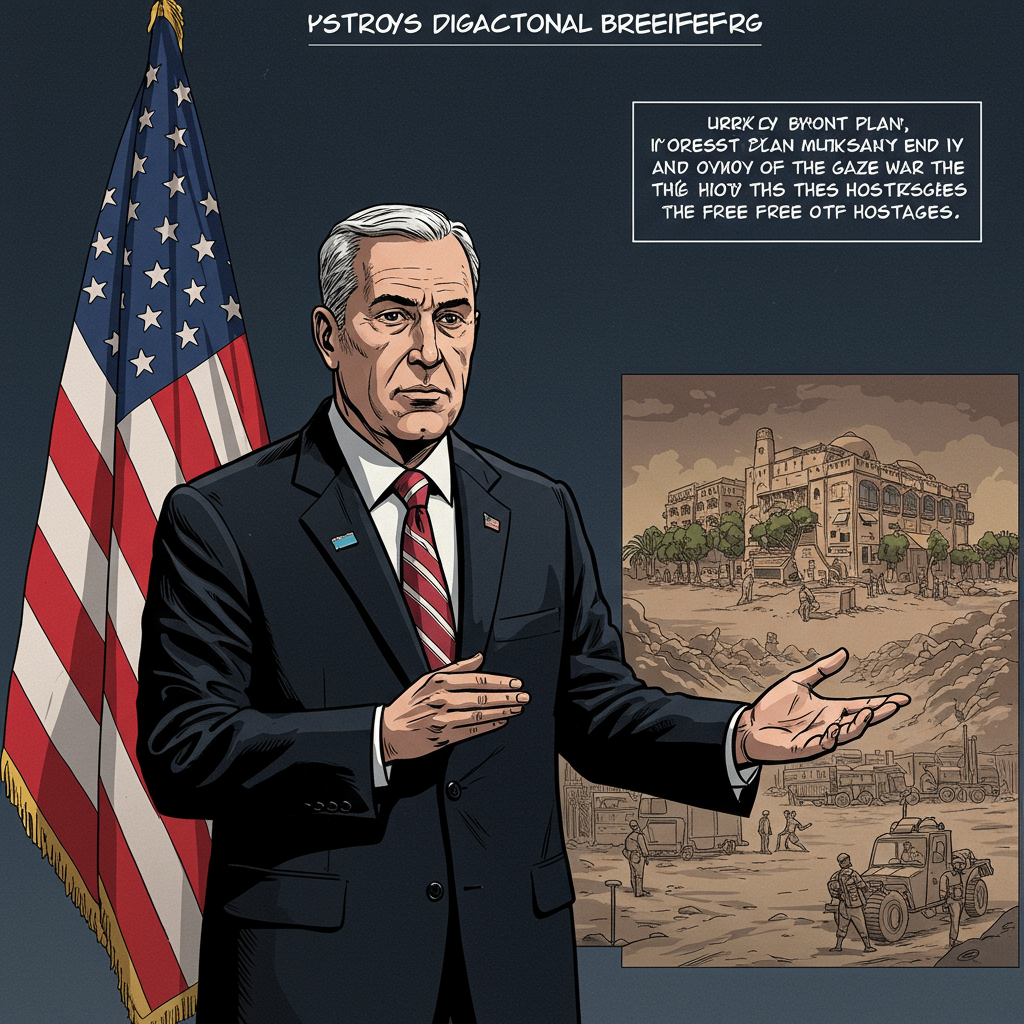Across the United States, a massive wave of “No Kings” protests swept the nation, drawing millions of citizens to the streets in a powerful assertion of democratic principles. These widespread demonstrations, organized by a coalition of left-leaning groups, aimed to challenge what they perceived as an alarming shift towards authoritarianism by the Trump administration. With over 2,500 rallies taking place in cities and towns nationwide, and solidarity events echoing across Europe, the movement quickly became one of the largest single days of protest in recent memory. The scale of public dissent, however, was met with a controversial response: state governors in several Republican-led states placed National Guard troops on standby, fueling a contentious debate about the right to peaceful assembly versus concerns over potential unrest.
Mobilizing for Democracy: The “No Kings” Mandate
The “No Kings” movement articulates a direct challenge to absolute power, deeply rooted in America’s founding ideals. Its core message, “No thrones. No crowns. No kings,” underscores a fundamental belief that the nation belongs to “We the People,” not to any single ruler or dictator. Organizers emphasized that President Trump’s actions, including his “expansive view of presidential power,” alleged defiance of court orders, and attacks on civil rights, directly contradicted this democratic foundation. Concerns ranged from immigration crackdowns and family separations to controversial healthcare stances, anti-environmental policies, and an “increasing scope over the federal government.” Protesters voiced a collective distress over what many viewed as a “move toward fascism and an authoritarian government.”
The demonstrations were strategically planned using a “distributed model,” encouraging local communities across all 50 states to participate. This approach ensured that the message of widespread discontent resonated from major urban centers like New York City, Washington D.C., Chicago, and Atlanta, to smaller towns. Previously, “No Kings” events in June reportedly drew over five million people, setting the stage for this even larger mobilization.
Unprecedented Public Outcry and International Solidarity
The sheer scale of the October 18, 2025 protests was remarkable. Thousands packed New York City’s Times Square, with organizers estimating 100,000 participants across the city’s five boroughs, chanting “Shut it down!” and displaying signs like “Make billionaires pay.” In Washington D.C., Senator Bernie Sanders delivered a keynote address, emphatically stating, “We’re not here bc we hate America, we’re here because we love America.” Similar scenes unfolded in Boston, San Francisco, Kansas City, and beyond, with participants carrying banners resembling the U.S. Constitution and expressing a fierce commitment to constitutional principles.
Solidarity extended far beyond American borders. Protests erupted in major European cities including Berlin, Madrid, Rome, Stockholm, and outside the U.S. embassy in London. Demonstrators gathered with signs urging “Make America sane again” and “Stop making war on your own people,” highlighting the global concern over America’s political trajectory. The unified message, whether on American soil or abroad, reflected a shared alarm about the perceived erosion of democratic institutions.
Leading Voices Against Perceived Authoritarianism
A diverse array of prominent figures lent their voices to the “No Kings” movement, amplifying the message of democratic defense. Senate Minority Leader Chuck Schumer, addressing protesters in New York, declared, “We have no dictators in America. And we won’t allow Trump to keep eroding our democracy.” Senator Chris Murphy of Connecticut warned that American democracy was already “in the middle of an authoritarian takeover,” accusing Trump of enacting “a detailed, step-by-step plan to destroy all the things that protect our free speech.”
Senator Raphael Warnock, speaking in Atlanta, expressed deep concern over President Trump’s rhetoric, particularly his comments calling Democrats “the enemy within.” Warnock condemned the deployment of masked ICE agents and political interference with healthcare, equating Republican redistricting efforts to “fascism.” Actor Robert De Niro, a known Trump critic, shared a video urging Americans to “non-violently rais[e] our voices” against a “would-be king.” Other celebrities like Jane Fonda, Kerry Washington, John Legend, and Alan Cumming were also anticipated to attend. Even “The Science Guy,” Bill Nye, spoke at the D.C. rally, urging lawmakers to “stop the abuses of this petulant president [Trump] and his circle of sycophants.”
The National Guard Standoff: State vs. Federal Power
Ahead of the “No Kings” protests, several Republican governors, including Texas Governor Greg Abbott and Virginia Governor Glenn Youngkin, controversially placed National Guard troops on standby. Governor Abbott explicitly stated that Texas would “NOT tolerate chaos” and linked planned Austin demonstrations to “Antifa,” threatening swift arrests and investigations into “any links to known terrorist organizations.” Similarly, Governor Youngkin affirmed the right to peaceful assembly but warned of “zero tolerance” for destruction or violence, confirming the Guard’s activation to “maintain peace.” Kansas Senator Roger Marshall also expressed doubt about the protests remaining peaceful, anticipating the need for military presence.
Democrats quickly denounced these pre-emptive deployments. Texas’s top Democrat, Gene Wu, argued that “Sending armed soldiers to suppress peaceful protests is what kings and dictators do,” directly accusing Governor Abbott of authoritarian tactics. This response highlighted a long-standing tension regarding the National Guard’s role in civil unrest, particularly previous instances where federal deployments under Trump faced legal challenges for proceeding without gubernatorial consent. While troops were on standby, visibility varied; in Washington D.C., no troops were visible at the protest, only local police.
Peaceful Intentions vs. “Hate America” Accusations
Despite the official concerns and military readiness, “No Kings” organizers consistently emphasized their commitment to non-violent action. Their website explicitly stated this principle, and leaders reportedly underwent de-escalation training to prevent altercations. This stance directly countered accusations from Trump allies, who labeled the gatherings as “the hate America rally” and accused protesters of being aligned with the “far-left Antifa movement.” One protester in D.C., Chuck Epes, proudly held a sign reading “I am antifa,” explaining that for him, the term simply meant supporting “peace, daycare, livable wage, healthcare,” immigrants, and people of color.
President Trump, in a teased interview clip, appeared to address the “No Kings” moniker, stating, “I’m not a king.” His administration also engaged in social media mockery, with the “Trump War Room” account posting memes depicting Trump with a gold crown. This playful dismissal contrasted sharply with the serious concerns voiced by protesters and their political allies. The protests themselves also displayed creative, less confrontational forms of dissent, with some demonstrators donning colorful inflatable costumes as part of “Operation Inflation.”
Frequently Asked Questions
What is the core message and purpose of the “No Kings” protests?
The “No Kings” protests, held on October 18, 2025, represented a widespread rejection of what organizers and participants perceived as President Trump’s authoritarian tendencies and expansive view of presidential power. The movement’s central message, “No thrones. No crowns. No kings,” affirmed that the United States is a democracy governed by its people and constitutional laws, not by an absolute ruler. Protesters aimed to challenge alleged governmental corruption, attacks on civil rights, and policies impacting immigrants, healthcare, and the environment.
Where did the “No Kings” protests take place, both nationally and internationally?
The “No Kings” protests were a truly global demonstration of dissent. Nationally, over 2,500 registered events unfolded across all 50 U.S. states, including major rallies in New York City (Times Square), Washington D.C., Chicago, San Francisco, Atlanta, Boston, and many smaller communities. Internationally, solidarity protests were reported in several European capitals, including London, Berlin, Madrid, Rome, and Stockholm, often gathering outside U.S. embassies to show support for their American counterparts.
Why did some state governors deploy the National Guard in anticipation of “No Kings” rallies?
Republican governors in several states, including Texas and Virginia, activated or placed National Guard troops on standby ahead of the “No Kings” protests due to concerns about potential violence or unrest. For instance, Texas Governor Greg Abbott explicitly cited a “planned antifa-linked demonstration” as a reason, vowing “zero tolerance” for chaos or property destruction. While organizers stressed their commitment to non-violent action, these governors emphasized public safety and the need to maintain order, reflecting a broader political tension regarding the use of military force in response to civilian demonstrations.
Asserting Democratic Principles Amidst Division
The “No Kings” protests on October 18, 2025, served as a powerful testament to the enduring American spirit of dissent and the unwavering commitment of many citizens to democratic ideals. From New York to Washington D.C. and across international borders, millions united to challenge perceived authoritarianism and safeguard constitutional principles. The controversial deployment of National Guard troops by some states underscored the deep political divisions and the sensitive balance between free speech and public order. Ultimately, these demonstrations highlighted a pivotal moment in American politics, where citizens vocally asserted their belief that in a nation founded on the rejection of monarchy, the people’s voice remains paramount.


